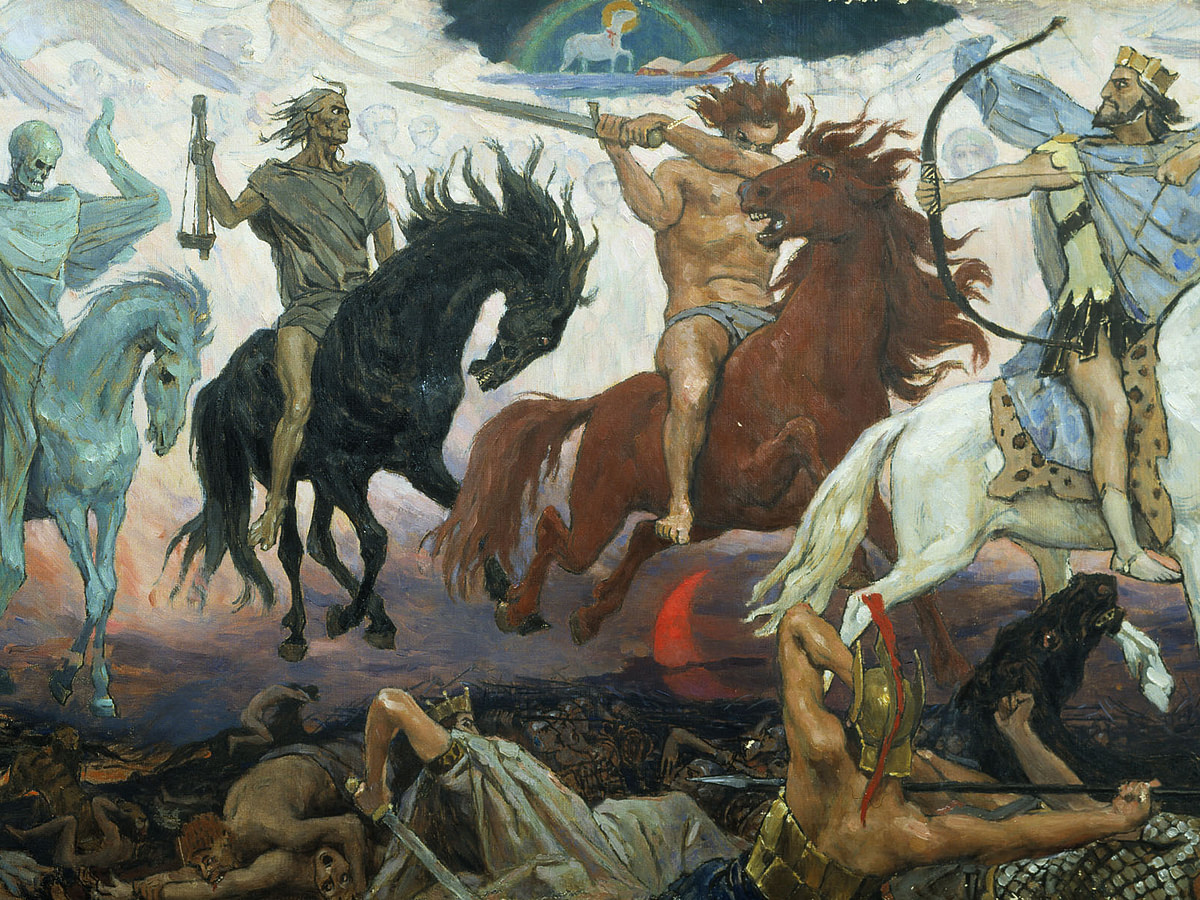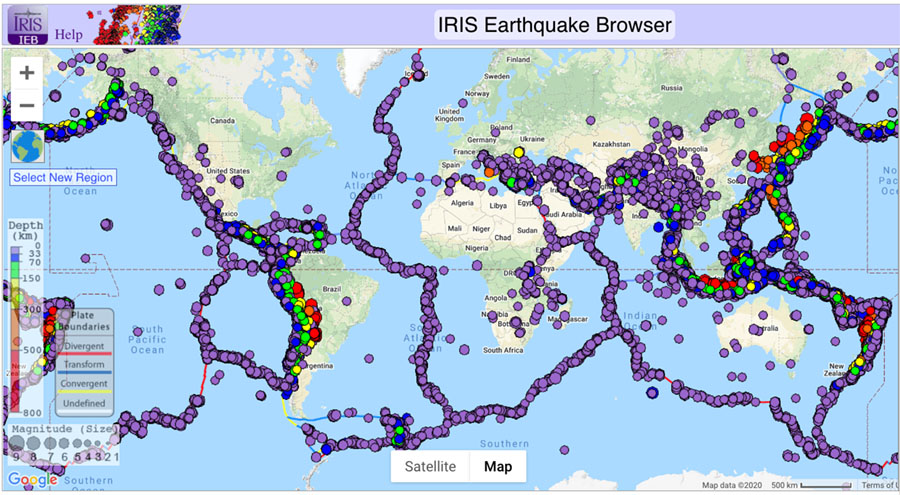As we mentioned in the last part of this series the book of Revelation, being full of symbols, is one of the hard parts of the Bible. No one should claim to be able to explain those symbols without referring to other parts of the Bible.
Before we get to all the beasts and plagues, let’s start with something more basic: the various symbolic numbers mentioned. We’re not talking numerology here; neither are we talking about the kind of demented math used in the Jewish Kabala. There is simply no proof that any of that has anything to do with the Bible.
Here are some of the numbers that seem to crop up with some regularity in the Bible:
ONE: Revelation refers to events that happen in “One day”, and others in “One hour”. Comparing these phrases to other parts of the Bible, we find Isaiah 10:17-20, which describes Israel’s destruction as happening in “one day.” It actually took several years. But relative to the centuries that the nation had lived, its destruction was sudden. “One hour” would be an even more startlingly short time period: “Too bad, too bad, you great city, Babylon you strong city, because in one hour your judgment has arrived!” (Revelation 18:10)
TWO: In some cases the “2” is clearly meant to be literal; “2 wings of an eagle” or “2-edged sword.” And in others, it seems to refer to a small amount but more than one. For example, when the heavenly armies of angels are described as “two myriads of myriads”, (Revelation 9:16) we shouldn’t assume it means literally 200,000,000 angels. A ‘myriad of myriads’ might be taken literally as 100,000,000; ‘two myriads’ simply makes it clear that we’re talking about millions and millions of angels.
“2 witnesses” are mentioned at Revelation 11:3. The rest of the passage refers to an olive tree and a lampstand. That should remind Bible students of the book of Zechariah. In that book, the olive tree feeding olive oil to a lampstand is explained as referring to the high priest of the time, Joshua, assisting the governor of the time, Zerubbabel. Both of them were faithful men who were taking the lead in providing ‘light’ to Jehovah’s people the Israelites who had just returned from Babylon. While they had begun well in their assigned task of rebuilding the temple, when persecution hit the people drifted away from it. After Zechariah and other prophets stirred them up, they got busy again.
With that background it becomes fairly easy to make the connection to the picture John painted, of 2 witnesses taking the lead at an assigned task during “the Lord’s Day” (if this term is unfamiliar go back to Part 3 of this series), being persecuted for doing that work and becoming less active – to the point that their work looked “dead” – then their work being resurrected again. The work Jesus has assigned his disciples for “the Lord’s Day” is to preach the good news of the kingdom earth-wide. I’ll leave the reader to decide which religion fulfills the picture, but here’s a hint: You will struggle to find an application of this prophecy to most of the denominations active during these last days.
THREE: The number 3 comes up a lot in Revelation: 3 angels, 3 trumpets, 3 woes, 3 unclean expressions... While there are hundreds of uses of the number 3 in the Bible, the ones that seem to have a symbolic usage are those that are a triple repetition, the idea of ‘3 times for emphasis’.
For example, “A ruin, a ruin, a ruin I will make it,” speaking of Israel’s kingship. (Ezekiel 21:27) If that were the only example you would be right to be skeptical. But check out these others:
Elihu, counseling Job about Jehovah’s forgiveness: “‘. He has redeemed my soul from going into the pit, And my life will see the light.’ Indeed, God does all these things twice, three times, for a man.” (Job 33:27-29)
Jehovah’s instructions to Ezekiel: “Clap your hands and repeat ‘A sword!’ three times. It is the sword of the slain victims, the sword of great slaughter, that surrounds them.” (Ezekiel 21:14)
Now, compare the passages in Revelation where a thought is repeated 3 times:
- Revelation 4:8 (TCNT) “These four Creatures... never cease to say-- 'Holy, holy, holy is the Lord, our God, the Almighty, who was, and who is, and who shall be.'”
- Revelation 8:13 (TCNT) “I heard an eagle flying in mid-heaven and crying in a loud voice--'Woe, woe, woe for all who live on the earth.”
The threefold repetition of “Holy” in reference to Jehovah is fairly obvious; the threefold “woe” for all who live on the earth shouldn’t be taken as 3 specific ‘woes’, but as an extremely woeful state.
FOUR: Perhaps one of the first things that comes to your mind with the number 4 is direction: north, south, east, west – the ‘4 corners of the earth.’ The Ark of the Covenant was rectangular with 4 feet under it. It resided in the center of the tabernacle built by the Jews in the wilderness, also rectangular, with sides facing north, south, east and west. The Israelite camp was laid out by divine command in a square, with 3 tribes on each of the four sides of the tabernacle. The temple Solomon built was also a rectangle aligned with the compass. Many of its furnishings were square. There seems to be a link between the number 4 and something being organized for worship of God.
Now what about 4 in the book of Revelation? “Around the throne were 4 living creatures.” (Revelation 4:6) It’s probably safe to assume these 4 represent the complete organizational structure of heavenly creatures supporting God’s worship.
“After this I saw four angels standing on the four corners of the earth, holding tight the four winds of the earth, so that no wind could blow on the earth.” (Revelation 7:1) The 4 winds, 4 corners idea clearly mean the whole earth, north south east and west. These 4 angels could easily represent the organized angelic army waiting to bring Armageddon to the whole earth.
Re 9:14 (YLT) “Loose the four messengers who are bound at
the great river Euphrates.” Again, “four” indicates something organized;
Euphrates is the major river of Babylon which, in Revelation, is all false religion
(more on that later). So these angels or messengers have an organized work spreading a message with
global effect (verse 15). That message had been chained up by Babylon but was to be
released during the Lord’s Day.
TWELVE: The first thing that pops into mind may well be the 12 tribes of Israel, or the 12 apostles. But that example breaks down. The Christian congregation today isn't divided into 12 'tribes', some following Peter, others John, etc. In fact, the apostle Paul strongly counseled Christians not to be partisan. (1 Corinthians 1:10-13)
However, we do find a commonality if 12 refers to the leadership of the two respective organizations - In its beginning, Israel referred to the 12 sons of Jacob, (each of whose qualities were prophetically described by their father in Genesis 48) just as the initial leaders of the Christian congregation were the 12 apostles, each having various gifts and qualities.
Why did Jacob have 12 sons? Why did Jesus name 12 apostles? Possibly, in part, because of the symbolism, that 12 is a multiple of 3 and 4: 4 for organized, 3 for emphasis of that idea. Similarly, 144,000 pops up in Revelation 7, and the number is there explained as '12,000 from each' of Jacob's sons. (I know the passage says '12 tribes of Israel,' but read the names closely - there was never a tribe of Joseph - and remember that Revelation is symbolic.)
TWENTY-FOUR - another multiple of 12 - also makes an appearance in Revelation. If our understanding of 12 as the organization of Israel's leadership or the Christian apostles is correct; and our understanding of 2 (2 X 12) as leadership of a god-assigned work is correct, then the '24 elders' mentioned first in Revelation 4:4 pretty much explains itself.
The numbers 5, 8 and 9 don’t get a lot of play in the Bible. So let’s move on.
SEVEN, TEN and SIX: 7 is one of the earliest numbers in the Bible. The week of 7 days was initiated by Jehovah himself. “God went on to bless the seventh day and to declare it sacred, for on it God has been resting from all the work that he has created.” (Genesis 2:3) God viewed 7 as the perfect completion of a task.As humans we tend to think in 10s: we have 10 fingers and 10 toes. And throughout the Bible, 10 is often used as a number that means “all” or complete from a human perspective: When Hannah was upset about being barren her husband said, “Why are you so sad? Am I not better to you than 10 sons?” (1 Samuel 1:8) When Jehovah wanted to reassure Hezekiah that He would keep him alive He offered him a miracle: “Do you want the shadow on the stairway to move forward ten steps or back ten steps?” (2 Kings 20:9) The steps were arranged like a sundial. Jehovah could have offered to move the shadow 7 or 8 steps, or 12 steps, but He didn’t. He offered 10.
That leaves 6: If 7 is a number that is complete or perfect from God’s viewpoint, His use of 6 might well represent something that falls short of that ideal – something imperfect, sinister, perhaps even destructive.
It’s true that both Isaiah and Revelation refer to certain angels as having 6 wings, but in each case it is emphasized that they actually have 3 pairs of wings, triple-emphasizing of their flying ability.
Other references to 6 are kind of obscure: Goliath was 6 cubits tall; other monstrous men from his tribe had 6 fingers on each hand; Solomon’s yearly income was 666 talents of gold; the image Nebuchadnezzar set up which Shadrach, Meshach and Abednego refused to worship was 6 cubits wide by 60 cubits tall; You could perhaps make the case that 6 represents things that are monstrous, idolatrous, or materialistic, but I think that would be a stretch: none of those number were used symbolically.
So: With few other biblical sources to lean on, what can we conclude about the mysterious passage:
“Let the one who has insight calculate the number of the wild beast, for it is a man’s number, and its number is 666.” (Revelation 13:18)
Other factors in the book of Revelation make it clear that this wild beast is a bad guy. The fact that the number is specifically called ‘a man’s number’ makes it clear this isn’t a heavenly picture; the fact that the number 6 repeats 3 times should make it clear that the ‘3 times for emphasis’ rule applies here; and the characteristic of the beast being emphasized seems to be that it is grossly imperfect, that it falls short of or even rebels against heavenly perfection.
Next time, we’ll talk about the beasts.
Feel free to leave a polite comment and share this with your friends.
Bill Underwood is the author of several books. All are available in either ebook or paper at Amazon.com. You can help support this site by purchasing a book.





